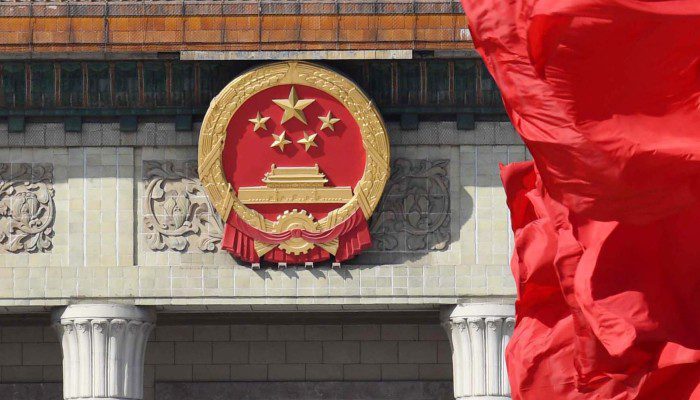The Challenge of Navigating China’s Tax Landscape
For foreign companies operating subsidiaries in China, the tax environment presents both significant challenges and strategic opportunities. Beyond the standard 25% Corporate Income Tax (CIT) rate, foreign businesses must navigate a complex web of regulations, frequent policy changes, and the intricate interplay between tax regulations and foreign exchange controls. This complexity is further heightened by regional variations in how tax policies are interpreted and implemented across different provinces and cities.
Many foreign subsidiaries unknowingly leave substantial money on the table through suboptimal tax planning. In our experience, proper tax structuring can legally reduce a foreign subsidiary’s effective tax rate by 5-10 percentage points while maintaining full compliance with Chinese regulations. This is particularly true when leveraging key incentives such as HNTE status, R&D super deductions, and strategic use of Double Taxation Agreements—all areas where professional guidance proves invaluable.
Understanding the Chinese Approach to Taxation
Chinese tax authorities approach foreign businesses with heightened scrutiny. The State Administration of Taxation (SAT) has developed sophisticated methods for analyzing cross-border transactions and corporate structures. Unlike in some jurisdictions, Chinese tax officials often interpret regulations to maximize tax collection, particularly when dealing with foreign enterprises.
Further complicating matters, China’s robust foreign exchange controls directly impact tax planning. Strategies that work well in other jurisdictions may be impractical or impossible in China due to these controls. A successful approach must consider both systems simultaneously.
The Real Cost of Ineffective Tax Planning
The financial impact of inadequate tax planning extends far beyond the obvious overpayment of taxes. Transfer pricing documentation has become a particular focus area for Chinese tax authorities, who have developed sophisticated audit techniques and risk assessment systems specifically targeting foreign subsidiaries.
Consider these common scenarios we’ve encountered in our practice: A European manufacturing company overpaid approximately 1.2 million RMB annually by failing to properly structure their royalty payments to their parent company. In another case, a U.S. tech firm faced penalties of 800,000 RMB due to insufficient transfer pricing documentation, which failed to meet China’s stringent requirements for local and master files. Similarly, a Japanese trading company discovered they could have saved over 2 million RMB through proper utilization of China’s Double Taxation Agreement, but lacked the documentation to qualify for “beneficial owner” status.
Beyond direct financial costs, ineffective tax planning can trigger time-consuming audits, create reputation issues with local authorities, and limit operational flexibility. When Chinese tax authorities identify issues, they have broad powers to enforce collections and impose penalties. Recent years have seen increased scrutiny of cross-border payments, particularly regarding service fees and royalties, with tax authorities demanding substantial evidence of economic substance.
Holistic Tax Optimization: Beyond Simple Compliance
Effective tax planning in China is not a one-time exercise but an integral part of your overall business strategy. It encompasses entity structure, operational decisions, transfer pricing policies, and repatriation planning. What distinguishes optimal from adequate tax planning is precisely this holistic approach that recognizes the interconnected nature of business decisions and their tax implications.
Chinese tax regulations evolve rapidly, with regional variations in implementation that can significantly impact your business. Regular “tax health checks” have become essential, as policies that were optimal last year may be suboptimal or even non-compliant today. This is particularly important given China’s sophisticated audit and risk management systems that specifically target foreign enterprises.
A comprehensive tax strategy must examine multiple dimensions simultaneously. It needs to consider the entire business lifecycle from market entry to potential exit, carefully navigating the interaction between Chinese and home country tax obligations. Your approach should account for impacts on cash flow and repatriation capabilities—a critical consideration given China’s strict foreign exchange controls. Additionally, your strategy must include building a robust risk profile with audit defense preparedness, while maintaining the adaptability needed to respond to China’s ever-changing regulatory environment.
Key Tax Optimization Strategies for Foreign Subsidiaries
Profit Repatriation Planning
Getting profits out of China efficiently requires careful planning that addresses both tax optimization and compliance with China’s strict foreign exchange controls. Most foreign subsidiaries rely on the dividend route, which carries a standard 10% withholding tax. This rate can potentially be reduced to 5% under applicable Double Taxation Agreements, provided you meet the increasingly stringent “beneficial owner” requirements.
However, a sophisticated repatriation strategy may incorporate alternative channels. Properly structured and documented service fees for management, technical support, or consulting services can create deductible expenses for the Chinese subsidiary while moving funds to the parent company. Similarly, licensing intellectual property to your Chinese subsidiary through royalty arrangements can provide another tax-efficient repatriation channel. It’s important to note that Chinese authorities have significantly tightened documentation requirements for these cross-border payments in recent years, requiring substantial evidence of actual service delivery and economic substance.
Strategic supply chain optimization presents another approach, where thoughtful positioning of procurement and sales functions can distribute profits appropriately across jurisdictions. Each repatriation method has its specific documentation requirements and foreign exchange control implications that must be carefully managed to avoid triggering audits or having payments rejected by banks or tax authorities.
Leveraging Double Taxation Agreements
China has signed Double Taxation Agreements (DTAs) with over 100 countries, creating significant opportunities to reduce withholding taxes on dividends, interest, royalties, and capital gains. These agreements can provide substantial tax savings when properly utilized, but accessing these benefits has become increasingly challenging as Chinese authorities have strengthened their anti-avoidance measures.
The key hurdle most foreign companies face is meeting China’s strict “beneficial owner” criteria. Chinese tax authorities apply rigorous tests to determine if a foreign entity truly qualifies for DTA benefits or is merely a conduit company. This assessment examines factors such as organizational structure, economic substance, and decision-making authority. Having genuine business substance in the jurisdiction claiming treaty benefits is no longer optional but essential—the days of “letterbox companies” accessing treaty benefits are firmly in the past.
Timing is also critical in DTA planning. These benefits rarely apply retroactively, making advance planning imperative. Companies often discover too late that their structures don’t qualify for treaty benefits, resulting in preventable withholding tax leakage. Successful DTA utilization requires ongoing attention to compliance requirements, including obtaining and renewing tax residency certificates and maintaining documentation that substantiates beneficial ownership claims.
Corporate Structure Optimization
Your corporate structure significantly impacts tax efficiency and often represents one of the most fundamental yet underutilized tax planning opportunities. The structure you choose establishes the foundation for all subsequent tax positions and determines which incentives you can access.
Entity selection is the first critical decision point. Whether you opt for a Foreign Invested Enterprise (still widely called WFOE in spite of the regulatory change), joint venture (for those who need more adventure in their lives), or representative office will significantly influence your tax obligations and operational capabilities. For instance, representative offices face severe restrictions on their activities and cannot issue official Chinese invoices (fapiao), which limits their clients’ ability to claim tax deductions for services received (but that is a topic for another post).
Companies with substantial regional operations should consider the benefits available for qualifying regional headquarters, particularly in cities like Shanghai and Beijing. These benefits can include reduced income tax rates, preferential treatment for senior expatriate employees, and streamlined regulatory processes. However, qualifying criteria are increasingly stringent, requiring substantial investment, employment levels, and regional coordination functions.
Holding company structures continue to offer advantages but must be carefully designed to align with China’s evolving anti-avoidance rules. Chinese tax authorities now routinely challenge structures they perceive as lacking economic substance or designed primarily for tax avoidance. Creating defensible structures requires attention to both form and substance, with clear business rationales beyond tax benefits.
Operational Tax Planning
Day-to-day operations offer numerous opportunities for legitimate tax savings that go beyond structural considerations. These operational incentives have become increasingly important as Chinese economic policy continues to emphasize innovation, regional development, and industrial upgrading.
One of the most valuable incentives remains the High and New Technology Enterprise (HNTE) status, which can reduce your Corporate Income Tax rate from the standard 25% to just 15%. Qualifying for HNTE status requires meeting specific criteria related to R&D activities, intellectual property ownership, and the educational qualifications of your workforce. While the application process is rigorous, the potential 10 percentage point reduction in your tax rate often justifies the effort.
For companies engaged in research and development, China now offers an enhanced R&D super deduction. This allows an additional 100% deduction on qualifying R&D expenses, effectively creating a total 200% deduction. This policy applies across all eligible sectors—not just manufacturing as was previously the case—reflecting China’s broader push to encourage innovation across the economy. Proper documentation of R&D activities and expenses is essential to successfully claiming this deduction.
Location-based incentives continue to play a significant role in China’s tax landscape. Special economic zones, free trade zones, and industry-specific parks offer favorable tax treatment that can include reduced income tax rates, simplified customs procedures, and export incentives. Strategic facility location decisions can significantly impact your overall tax burden.
VAT planning represents another area with substantial optimization potential. Thoughtfully structuring your supply chains can help optimize VAT positions, particularly for export-oriented businesses eligible for VAT refunds. Understanding the intricacies of China’s VAT system, including recent reforms, can identify opportunities to reduce tax leakage and improve cash flow.
The Cautious Approach: Building Defensible Positions
While optimization is important, maintaining a defensible position with Chinese tax authorities is essential for long-term success. Chinese tax officials have developed sophisticated audit techniques and risk assessment systems specifically targeting foreign enterprises, and they possess broad powers to investigate, adjust tax positions, and impose penalties.
The foundation of a defensible tax position is comprehensive documentation. Chinese tax regulations increasingly require contemporaneous documentation that demonstrates economic substance behind transactions, particularly for transfer pricing, service fees, and royalty payments. This documentation must be prepared according to specific regulatory requirements and maintained for prescribed periods. The level of detail expected by Chinese tax authorities often exceeds what foreign companies are accustomed to in their home countries.
Consistency between your tax positions and actual business operations is equally crucial. Chinese authorities are particularly vigilant in identifying disconnects between contractual arrangements and operational reality. For example, claiming that significant value creation occurs outside China while all key personnel and decision-making are evidently located within China will almost certainly trigger challenges.
Regular risk assessment should be built into your tax governance processes. Each major tax position should be periodically evaluated for continued defensibility in light of evolving regulations and enforcement trends. When appropriate, consider seeking advance rulings or maintaining open communication with local tax officials to reduce uncertainty. This proactive approach allows you to address potential issues before they escalate into formal disputes.
The most successful foreign subsidiaries adopt a cautious approach that focuses on clearly supportable positions rather than aggressive interpretations that may trigger lengthy disputes. This doesn’t mean foregoing legitimate tax planning opportunities, but rather ensuring that each position has solid factual and legal foundations that can withstand scrutiny.
The Process: Continuous Tax Review Cycle
Optimal tax planning in China is not a one-time event but an ongoing process that responds to both business evolution and the rapidly changing regulatory environment. Chinese tax regulations undergo frequent revisions, with new implementation guidelines, circulars, and local interpretations emerging regularly. What constitutes effective tax planning must evolve in parallel.
Our approach begins with a comprehensive assessment of your entire business model. This involves detailed analysis of your organizational structure, funding arrangements, intellectual property ownership, and operational flows. We examine both formal legal structures and actual operational practices to identify both risks and opportunities. This holistic view is essential because tax optimization in China cannot be approached in isolation from your broader business strategy and global tax position.
Based on this assessment, we develop a customized tax optimization roadmap specifically tailored to your industry, scale, and risk appetite. This strategy carefully balances tax efficiency with compliance certainty—a particularly important consideration in China, where aggressive tax positions can lead to prolonged disputes and reputational damage. The strategy encompasses both immediate optimization opportunities and longer-term structural recommendations.
Implementation support represents the critical bridge between strategy and execution. Our team provides hands-on assistance with restructuring, documentation preparation, and communication with relevant authorities. This practical support ensures that theoretical tax benefits translate into actual savings while maintaining defensible positions.
The final and ongoing component is regular review. We recommend quarterly or semi-annual reviews to ensure continued alignment with changing regulations and business needs. These reviews identify emerging risks and opportunities while confirming that existing strategies remain effective and compliant.
To illustrate this process in action: A European industrial equipment manufacturer implemented our tax optimization approach, resulting in a reduction of their effective tax rate from 28% to 21% while simultaneously strengthening their compliance documentation. The comprehensive solution included restructuring their royalty arrangements to meet increasing substance requirements, successfully qualifying for HNTE status through proper R&D documentation, and optimizing their supply chain configuration to distribute profits appropriately while maintaining defensible transfer pricing positions.
Why Professional Guidance Is Essential
Chinese tax law represents one of the most challenging aspects of operating a business in China. The tax system is notoriously complex, with intricate regulations often subject to varying interpretations by local tax authorities. This regional variation means that approaches that work perfectly in Shanghai might be rejected in Chengdu, while practices accepted last year may face challenges this year as enforcement priorities shift.
The written regulations represent only the starting point for understanding your actual tax obligations. How these rules are interpreted and enforced varies significantly across regions and can change with limited notice. This creates an environment where local knowledge and relationships become invaluable assets for navigating the system effectively.
Professional guidance in this context provides several critical advantages. First, it offers access to deep understanding of both Chinese and international tax principles, ensuring that your China tax strategy integrates seamlessly with your global approach. Second, established advisors bring insight into how regulations are actually applied in practice, often based on experience with hundreds of similar cases across different regions. Third, experienced advisors provide tested audit defense and negotiation strategies developed through years of representing clients before Chinese tax authorities.
Perhaps most valuable is the ability to anticipate regulatory trends and plan accordingly. Chinese tax policy follows broader economic and political priorities, and understanding these connections allows for more forward-looking tax planning. This predictive capability helps you not only optimize current positions but also avoid structures likely to face future challenges.
Our team combines international tax expertise with deep local knowledge developed over decades of operating in China. We maintain close relationships with tax officials across major Chinese business centers, allowing us to provide guidance based not just on written regulations but on practical implementation realities. This combination of technical expertise and local insight enables us to develop tax strategies that are both efficient and sustainable in China’s unique tax environment.
Taking the Next Step
Is your Chinese subsidiary operating with optimal tax efficiency? Our experience suggests that most foreign businesses discover significant room for improvement when they conduct a systematic review. The rapidly evolving nature of Chinese tax regulations means that even well-structured operations benefit from regular reassessment.
Tax optimization in China requires a unique combination of technical expertise, local knowledge, and practical experience that few foreign companies possess internally. The stakes are high—inefficient tax structures can cost millions in unnecessary payments, while aggressive positions can trigger costly disputes and reputational damage. Professional guidance helps navigate this balance effectively.
We invite you to contact us for a complimentary initial tax health check specifically tailored to foreign subsidiaries operating in China. This no-obligation assessment will identify potential areas for optimization and quantify potential savings. Our approach focuses on practical, implementable recommendations rather than theoretical possibilities, ensuring that identified savings can actually be realized within China’s unique business environment.
The assessment includes a high-level review of your current corporate structure, operational model, and major cross-border transactions. We’ll identify immediate optimization opportunities while outlining potential longer-term structural improvements. You’ll receive a clear summary of potential tax savings along with an implementation roadmap.
To arrange your tax health check or learn more about our services, please contact us at contact@sjgrand.cn.

President | S.J. Grand Financial & Tax Advisory
Latest Articles:






